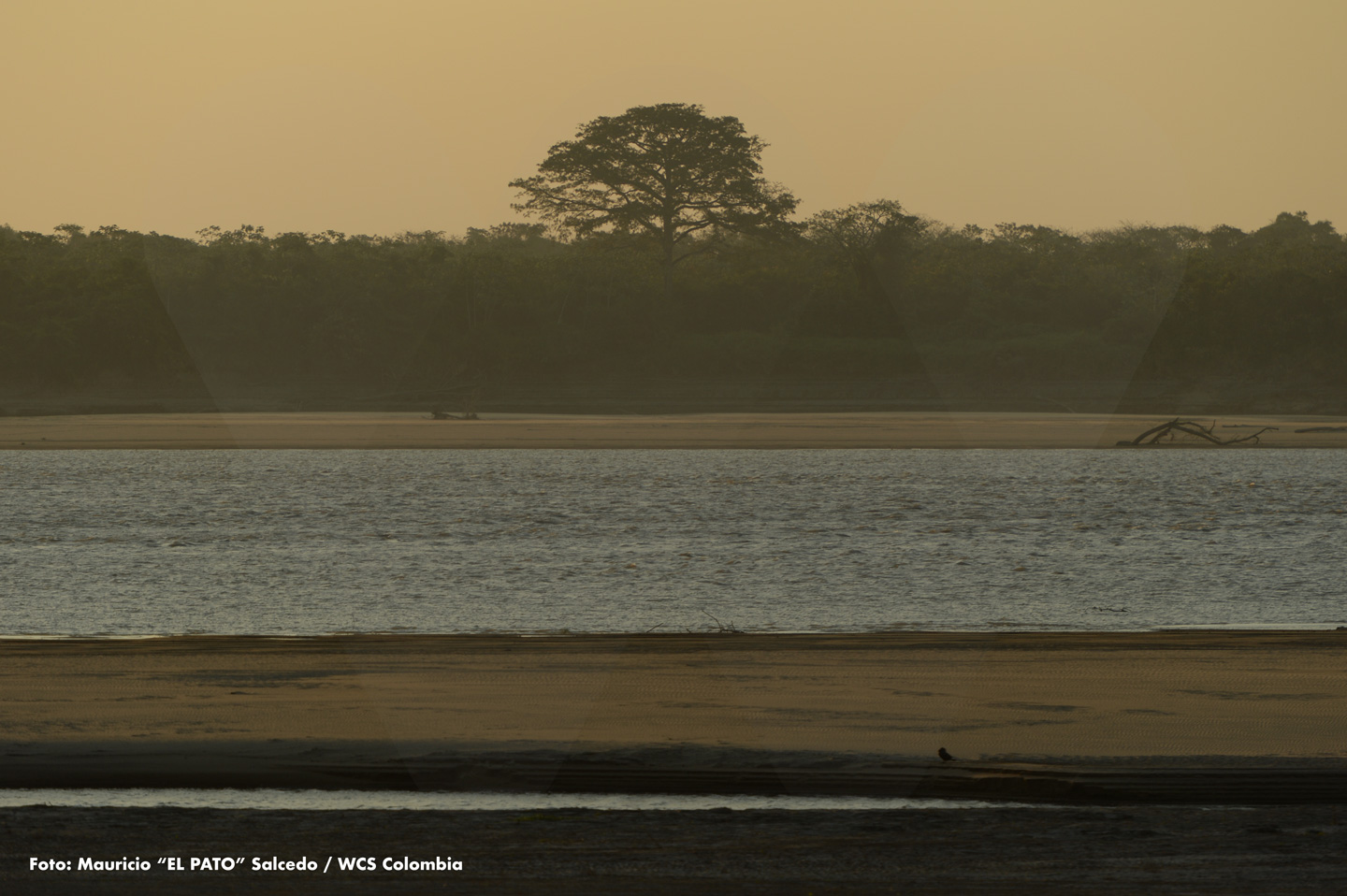 The Meta River
The Meta River
What does the Meta River look like during the giant South American river turtle’s nesting season? This image reveals several features, most notably the appearance of its beaches—which in other areas can be much larger—and the reduction of its water flow.
A side note: the photo accompanying this text was taken near Santa María La Virgen, one of the 19 rural communities belonging to the municipality of Cravo Norte, in the department of Arauca. This area is a key nesting site for the giant South American river turtle in this part of Colombia’s eastern plains.
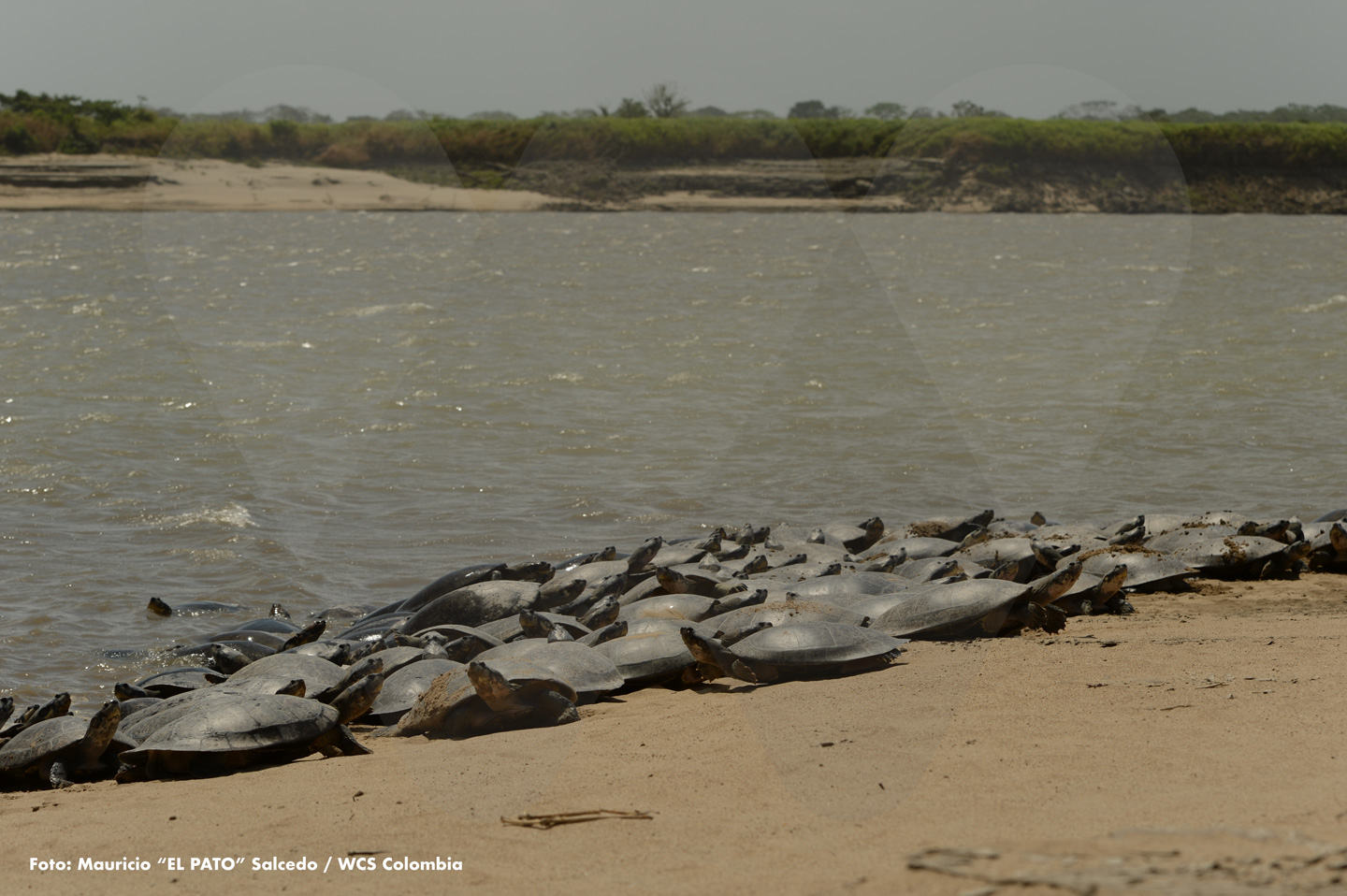 The Cambote
The Cambote
With the first light of morning, the future giant South American river turtle mothers arrive, one after another, at the same beach along the Meta River. If undisturbed, they will stay together there all day, soaking up the warmth of the sun and the sand beneath their heavy bodies. At certain times during the day, the ambient temperature can easily exceed 35 degrees Celsius—a condition they take advantage of to gain energy and support the crucial task of forming and strengthening the eggs they already carry inside. As evening falls, all will leave the site, only to return the next day. These warm gatherings of turtle mothers are what is known as the cambote.
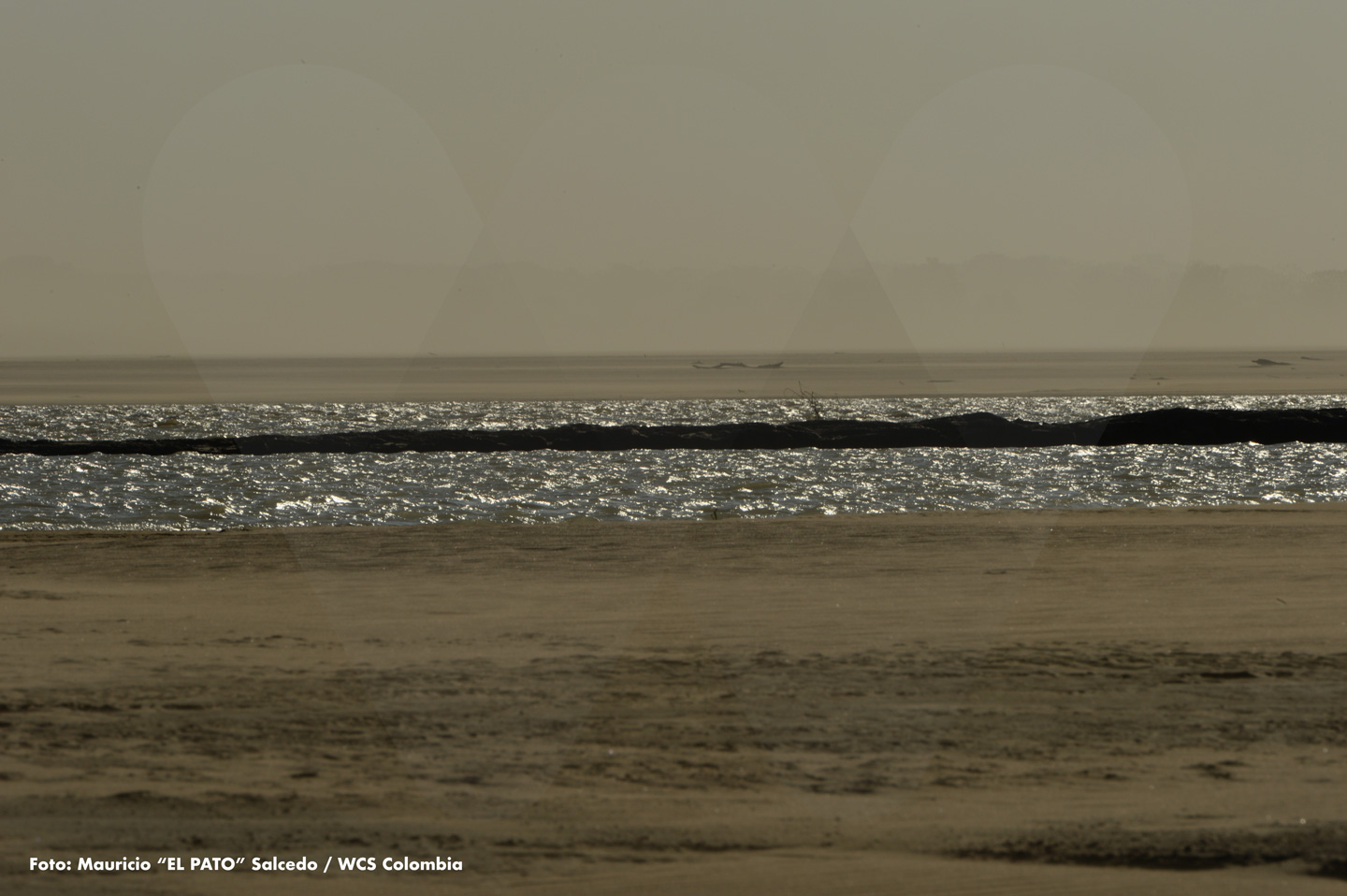 The Beaches
The Beaches
Near Santa María La Virgen (Arauca), the giant South American river turtle nesting season takes place year after year between December and June. Meanwhile, from the start of this period and no later than March, the Orinoquia region experiences its pronounced dry season, a time when the waters of rivers, streams, and wetlands recede dramatically. This is no exception for the Meta River, whose flow shrinks to a thin thread seemingly suffocated by vast sandy expanses. These sandy bodies—note this—will gradually become essential spaces for nesting and for witnessing the later hatching of the little turtles.
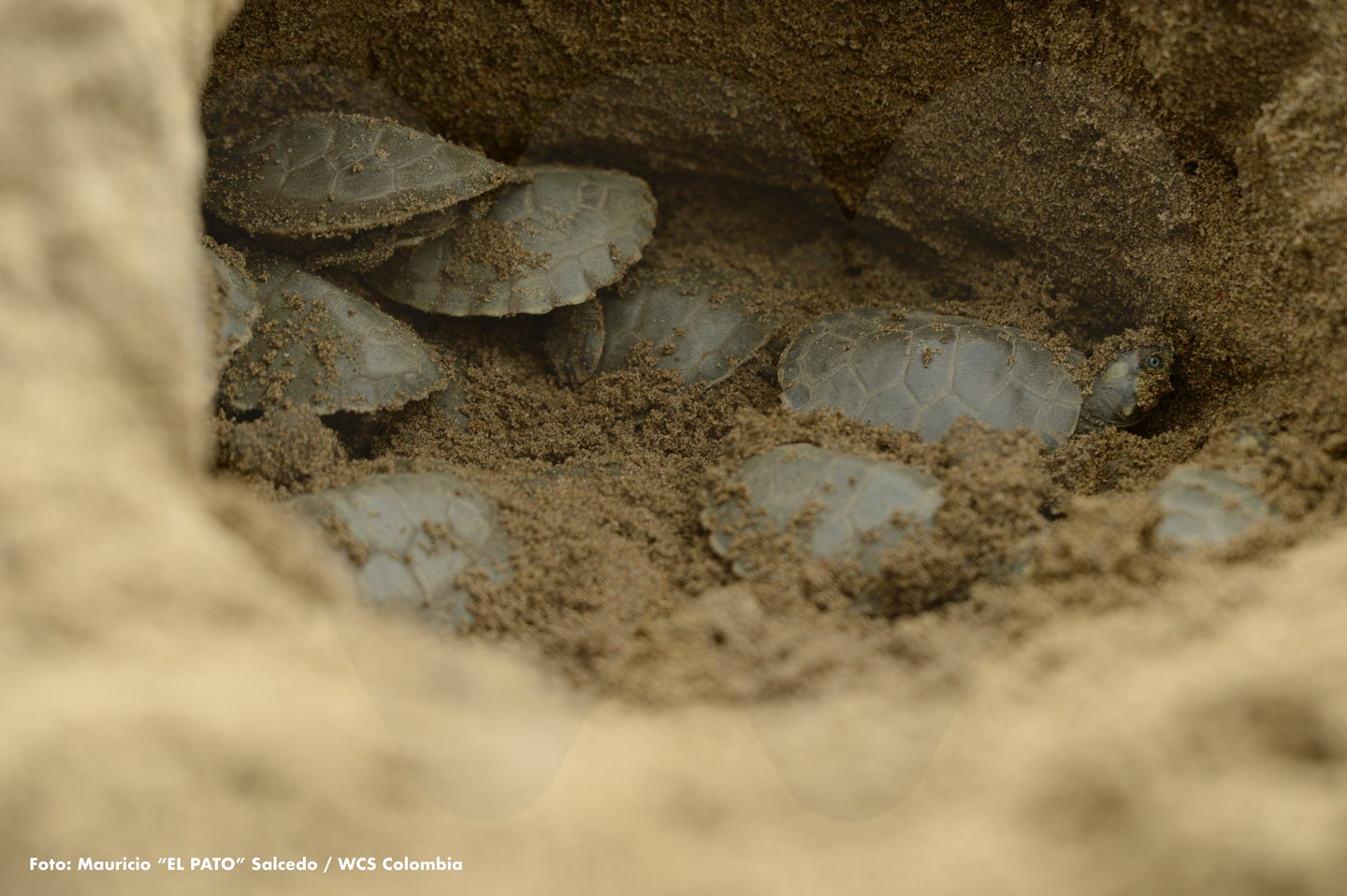 The Nest
The Nest
Between May and June—specifically on the beaches of the Meta River that emerge near Santa María La Virgen (Arauca)—is when the highest number of giant South American river turtle hatchlings emerge. The depth of each of these nests, carefully crafted by their mothers during warm nights and early mornings, ranges between 30 and 80 centimeters. Additionally, the number of eggs these sandy cavities can hold varies between 26 and 184. After 42 to 68 days of incubation, the eggs hatch.
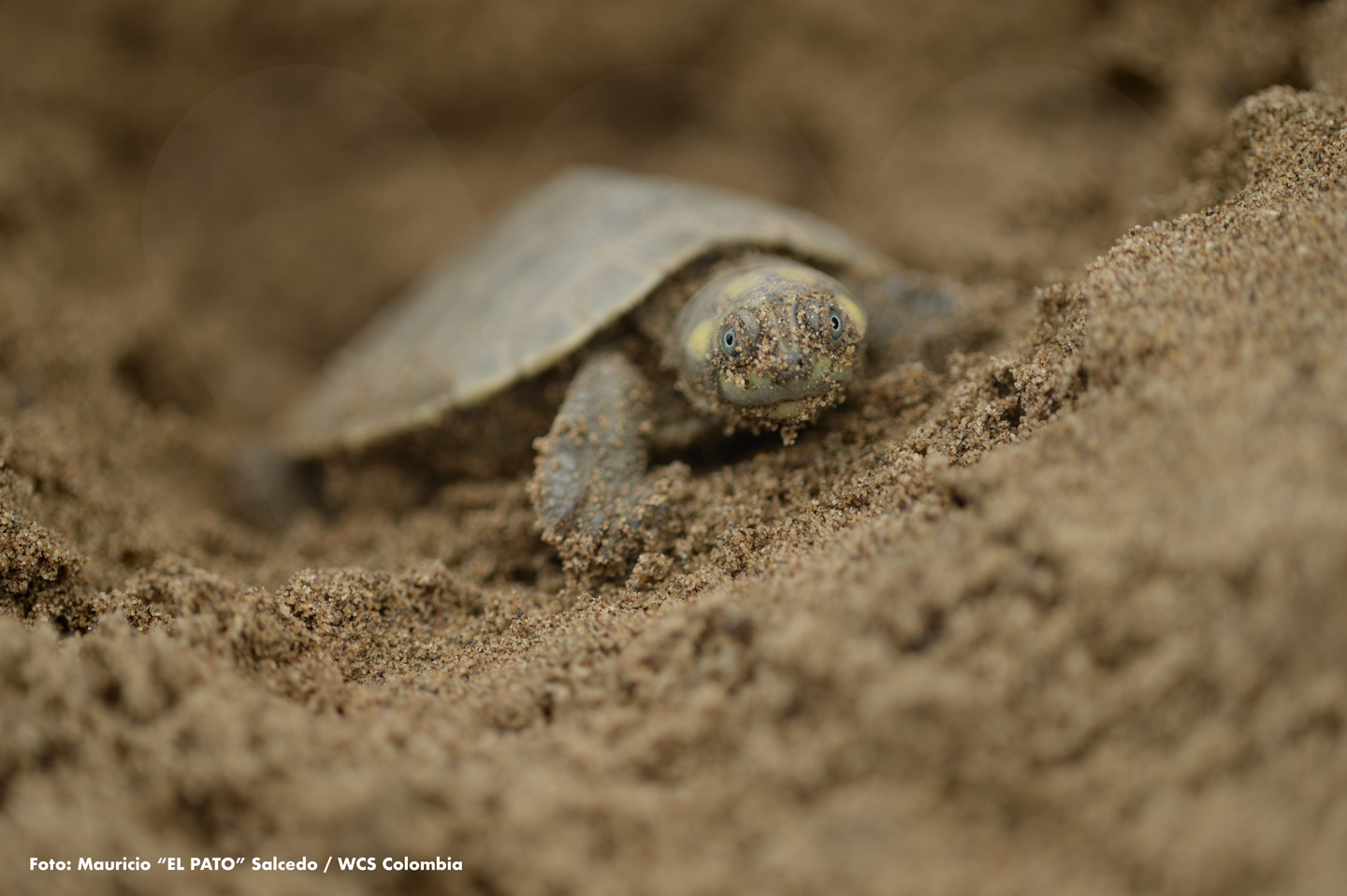 The Hatchling
The Hatchling
Every hatchling’s birth represents a tremendous achievement, especially considering the multiple threats this species faces. The list includes illegal hunting—mainly targeting mothers while they lay their eggs on the beaches; consumption of their meat and eggs; trade of adult turtles and hatchlings as food sources and pets; premature flooding of nesting beaches; nest poaching; untimely human presence on nesting sites; and, more broadly, habitat destruction that sustains the life of these animals.
Traslated with AI suppport